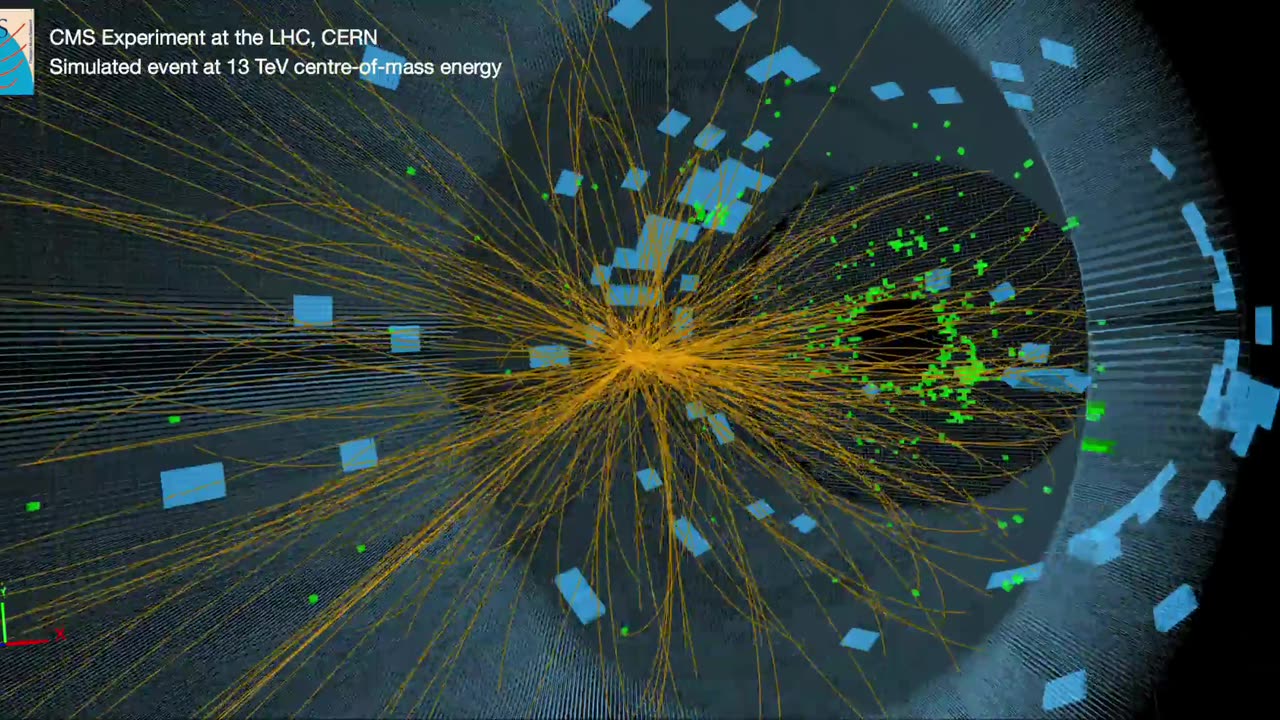Premium Only Content

CMS event collision simulation at 13 TeV
The Compact Muon Solenoid (CMS) is a general-purpose detector at the Large Hadron Collider (LHC). It is designed to investigate a wide range of physics, including the search for the Higgs boson, extra dimensions, and particles that could make up dark matter. Although it has the same scientific goals as the ATLAS experiment, it uses different technical solutions and a different magnet-system design. On 5 April 2015, after two years of maintenance and upgrades, the Large Hadron Collider (LHC) started up at the collision energy of 13 teraelectronvolts (TeV). The decision to begin the LHC’s second run at 13 TeV has been taken in order to optimise the delivery of particle collisions for physics research, and thereby speed the route to potential new physics. An electronvolt is a unit of energy or mass used in particle physics. One eV is extremely small, and units of a million electronvolts, MeV, or a thousand million electronvolts, GeV, are more common. The LHC will ultimately reach 7 million million electronvolts, or 7 TeV per beam. One TeV is about the energy of motion of a flying mosquito.
-
 LIVE
LIVE
Sean Unpaved
1 hour agoJalen Carter's 1-Game Suspension & The Pressure for Instant Greatness in Sports
295 watching -
 LIVE
LIVE
Steven Crowder
4 hours ago🔴Iryna Zarutska Was Failed - And We Won't Forget Who Did It
22,604 watching -
 1:06:44
1:06:44
Timcast
1 hour agoNATO Article 4 INVOKED Over Russian Incursion Into Poland, Drones SHOT DOWN, War FEARED
30.2K97 -
 LIVE
LIVE
The Charlie Kirk Show
1 hour agoWe Don’t Have To Live This Way + The Death of Britain | Emmons, Shirley, Prof. Orr | 9.10.2025
2,170 watching -
 LIVE
LIVE
Rebel News
48 minutes agoLibs 'monitoring' trans law, Quebec tax hoarding, Ford says 'look harder' | Buffalo Roundtable
288 watching -
 LIVE
LIVE
Badlands Media
1 hour agoThe Daily Herold: Sept. 10, 2025
1,367 watching -
 1:06:13
1:06:13
The Rubin Report
2 hours agoPress Gasps When Told Trump’s Brutal Plan for Charlotte Stabbing Suspect
20.6K45 -
 LIVE
LIVE
The Mel K Show
2 hours agoMORNINGS WITH MEL K - Preparing for the Truth Tsunami: Can We Handle the Truth? 9-10-25
883 watching -
 1:35:20
1:35:20
Benny Johnson
3 hours agoBlack on White Crime Epidemic EXPOSED After Charlotte Murder | Trump Calls for 'DEATH PENALTY'
34.3K132 -
 DVR
DVR
Bannons War Room
6 months agoWarRoom Live
35.1M8.23K